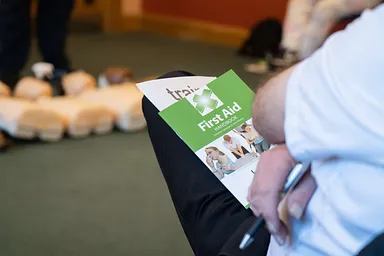The recovery position is used when a casualty becomes unconscious. The position can help keep the airway open and allow vomit or blood to flow freely away from the casualty.
The Recovery position has the potential to save someone's life as a casualty's airway may remain closed or they could choke on vomit or blood when lying on their back.

It is important to scan the scene for any debris or sharp objects before the casualty is rolled into position. This is also a good time to remove spectacles and bulky items out of pockets which could also be a risk. Notifying other bystanders as to what you are doing at this point could ease any confusion about the situation.
Positioning
The most important thing is to change the casualty's position from flat on their back to on their side. Even people who have never been on a first aid course have helped save someone just be rolling them onto their side. Irregardless of the fact that they had not been on any formal training course.
- First clear the near side arm so that the hand is above the shoulder.
- Bring the other arm across the casualty's chest so that the knuckle rest against the near side cheek
- Bend the far leg (90 degree) so that foot is flat on the floor.
- Support the head (palm to palm with hands) and roll the casualty by pulling the knee towards you.
Before leaving the casualty make sure that they are stable and that their head is resting on their hand.
Simplified it is recommended that all unconscious casualties are placed in the recovery position except for the instances outlined below.
When Not to Use
Do not place a casualty in the recovery position if you suspect a spinal injury or major head injury. The procedure could have the potential to make these type of injuries worst.
When encountering a blocked airway the casualty will still need to be moved, regardless of any type of injury. During this time liaise with the emergency services and take their advice on the situation. Formal training is needed to learn the steps required to move a casualty without making head & spinal injuries worse.

.jpg)
.jpg)